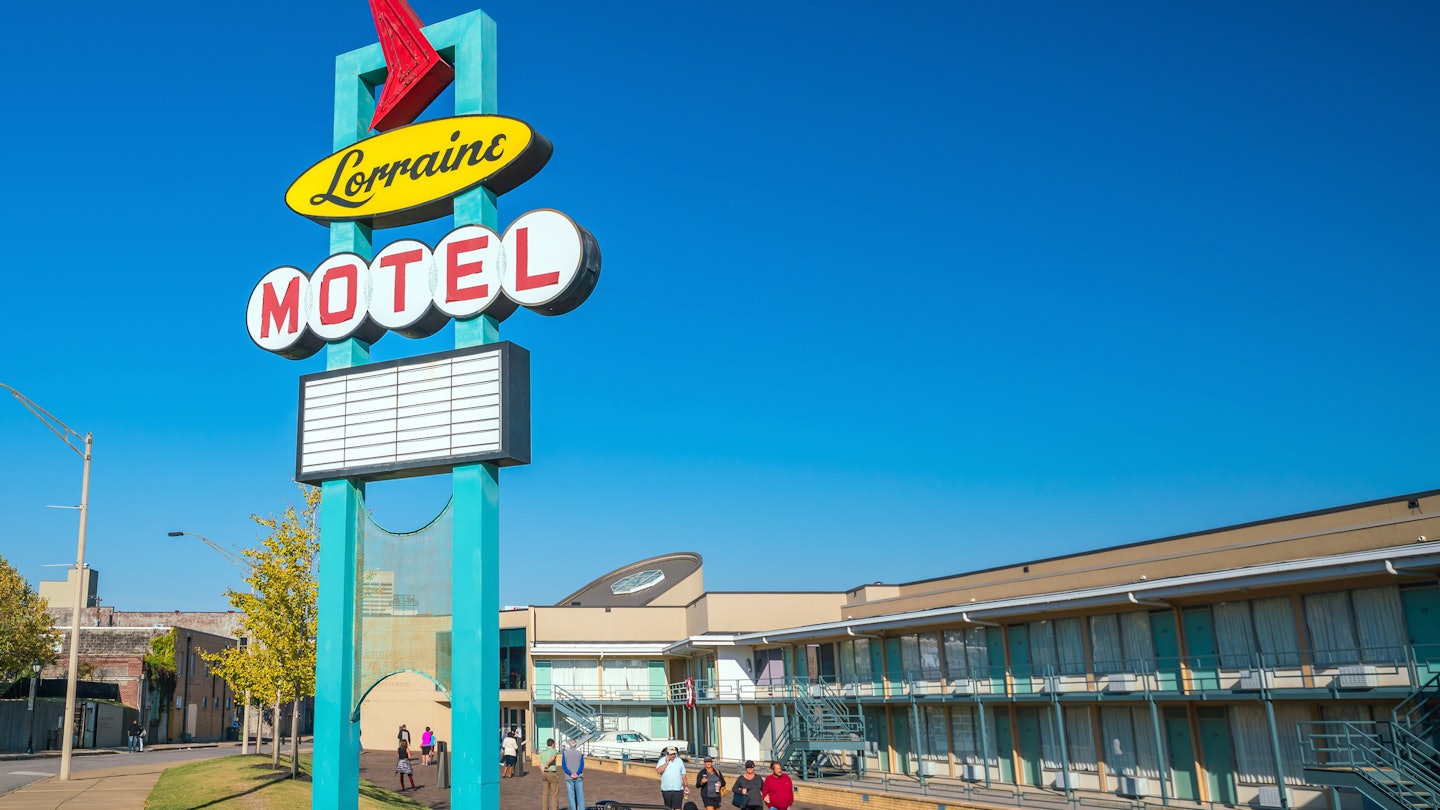
A visitor’s guide to the National Civil Rights Museum at the Lorraine Motel

Dec 17, 2024 • 5 min read

The National Civil Rights Museum at the Lorraine Hotel is an important landmark in American history © f11photo / Shutterstock
Arguably one of the most important museums in the United States highlighting the American Civil Rights movement, the National Civil Rights Museum at the Lorraine Motel is both an educational center and a shrine to civil rights leader Dr. Martin Luther King, Jr who was assassinated at this location in 1968. Get a preview of what visitors can discover at this museum with the guide below, and learn about other intriguing Civil rights sites in the south.
The beginning of the Lorraine Motel
The National Civil Rights Museum’s story begins in Memphis, Tennessee’s South Main Historic Arts District. Here, travelers will find the Lorraine Motel, where the museum is partially located.
Built in 1925, the Windsor Hotel (as it was known then) was a whites-only establishment that discriminated against African Americans and other people of color. Though the hotel became the Marquette in the 1940s, the racial policy remained.
Things changed in 1945. Walter Bailey, a Black Memphis businessman, purchased the establishment and renamed it the Lorraine Motel. He named it after his wife, Loree, and a well-known tune called "Sweet Lorraine."
The Lorraine was one of a few hotels that served Black travelers.
Singers like Aretha Franklin, Otis Redding and The Staple Singers were among the motel’s most popular guests. This was largely due to its proximity to a trio of famous recording studios – Stax Records, Royal Studios and Sun Studio – all less than three miles away.

How the Lorraine Motel became the site of the National Civil Rights Museum
On April 4, 1968, the Lorraine Motel witnessed one of the darkest days in American history. This was the day Dr. Martin Luther King Jr. was assassinated on the motel’s balcony.
Dr. King was in Memphis to support a sanitation workers strike. He gave his famous “I’ve Been to the Mountaintop” speech at Mason Temple the day before his death, not far from the motel.
The room where King stayed – 306 – was never rented out again and has been preserved, exactly as it was on that day.
By the 1980s, the Lorraine Motel was in foreclosure when D’Army Bailey, who was an activist, a lawyer and a judge, raised over $140,000 to purchase the motel. Bailey’s vision was to make the motel more than a place to learn history. He hoped it would inspire people to take action.
The National Civil Rights Museum opened in 1991 and underwent a $27.5 million renovation in 2012. Today, it is one of the most visited museums in Memphis and serves as the heartbeat and anchor of the city’s downtown. Its presence directly benefits the neighborhood and has sparked the area’s revitalization, with new hotels, restaurants and apartments.

Attractions at the National Civil Rights Museum
Over the last 30 years, the National Civil Rights Museum has become a place of unity and community for Black Memphians and those who support the ongoing civil and human rights issues worldwide. It’s been the ideal site and meeting location for various protests like Black Lives Matter, pro-immigration rallies and other peaceful gatherings.
Permanent museum exhibits include “A Culture of Resistance,” which details the history of slavery in America through a circular gallery filled with artifacts, data, and 3D models. "The Year They Walked" is another fascinating exhibit. This collection focuses on the 1955-1956 Montgomery Bus Boycott and features a life-sized bus that visitors can enter.
Some of the museum's most striking artifacts are in room 306 of the Lorraine Motel, where King stayed before his assassination. The room has been preserved as he left it, allowing museum visitors to see a moment frozen in time. While visitors can’t enter the room, they can observe it from the doorway. A 1968 Cadillac and 1959 Dodge Royal (car models that King and activist Cornelia Crenshaw drove) sit in front of the Lorraine Motel to help establish the time period.
The museum also hosts webinars and special events. These include the MLK Soul Concert Series and Night at the Lorraine, an event that features music, food and entertainment.
Every year on January 15, King’s birthday, the museum honors his life and legacy through a series of events with prominent civil rights leaders and scholars. And since this is Memphis, local artists give powerful musical performances directly in front of the balcony where King was assassinated.

On April 4 at 6:01pm, the time King was shot, the museum holds a moment of silence for the ceremonial changing of the wreath on the balcony at Room 306.
Since 1991, the museum has hosted the annual Freedom Awards, its biggest event. The awards, held in October, honor individuals who’ve had a significant impact on the battle for human rights. The 2021 recipients were Michelle Obama and the Poor People's Campaign which is led by Dr. William Barber and Dr. Liz Theoharis.

Tips for visiting the National Civil Rights Museum
Over 12 million people a year visit Memphis for its legacy of blues, soul and rock ’n’ roll. They head to iconic places like Beale Street, Elvis Presley’s Graceland or the Stax Museum of American Soul Music just to get a taste of it. Make the most of your Memphis trip by planning which sites you want to visit and what you want to see there.
The museum uses a timed entry system, so guests must order tickets and select a time to visit online. Admission costs $20 for adults, $18 for seniors and college students, and $17 for children between 5- and 17-years-old. Entry is free for active military members and kids 4 and under.
Expect the museum to close for New Year's Day, Easter, Thanksgiving, and Christmas. The National Civil Rights Museum remains open for holidays like King's Birthday and Juneteenth. Regular museum hours are from 9 am to 5pm daily, except Tuesdays when the museum closes.

You might also like:
The most essential US civil rights sites in the South
15 places in the US to mark Black History Month
5 essential Black history sites in Philadelphia















